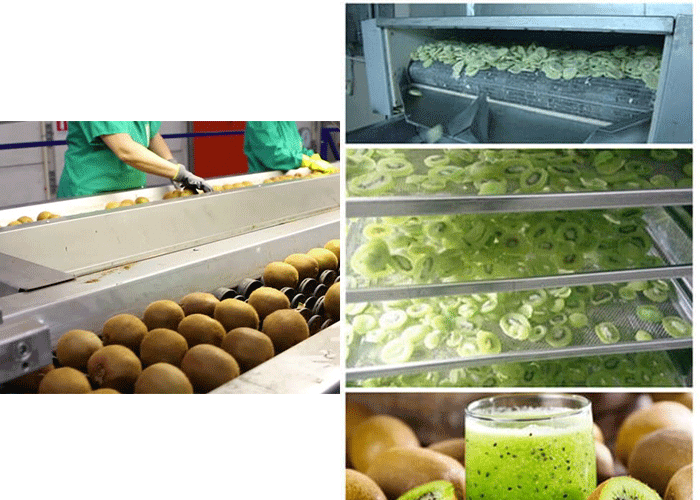Kiwi fruit is a delicious and nutritious fruit that is enjoyed by people all over the world. Processing kiwi fruit can be a challenging task, but with the right equipment and techniques, it can be done efficiently and effectively. In this article, we will explore the kiwi fruit processing line and the various steps involved in turning this delicious fruit into a marketable product.
The kiwi fruit processing line typically begins with the arrival of fresh kiwi fruit at the processing plant. The fruit is carefully inspected to ensure that it meets the necessary quality standards. This inspection process is crucial to ensure that only the best fruit is used in the production process.
Once the kiwi fruit has been inspected, it is then washed and sanitized to remove any dirt or debris that may be present on the surface of the fruit. This is a critical step in the processing line as it helps to prevent the spread of bacteria and other harmful pathogens.
After the kiwi fruit has been washed and sanitized, it is then sorted based on size and quality. This is typically done using specialized sorting machines that are designed to quickly and efficiently sort large volumes of fruit. This sorting process helps to ensure that only the highest quality fruit is used in the production process.

Once the kiwi fruit has been sorted, it is then peeled using specialized peeling machines. These machines are designed to quickly and efficiently remove the tough outer layer of the fruit, leaving behind the soft and delicious flesh. The peeled kiwi fruit is then inspected once again to ensure that it meets the necessary quality standards.
After the kiwi fruit has been peeled and inspected, it is then sliced into smaller pieces using specialized slicing machines. These machines are designed to quickly and efficiently slice large volumes of fruit into uniform pieces of the desired size. This slicing process helps to ensure that the fruit is easy to handle and can be used in a wide variety of different applications.
Once the kiwi fruit has been sliced, it is then packed into containers for transport to various markets around the world. These containers are typically designed to protect the fruit from damage during transport and to ensure that it stays fresh and delicious for as long as possible.
In addition to the processing steps outlined above, there are also several other steps that may be included in the kiwi fruit processing line depending on the specific needs of the producer. For example, some producers may choose to add sugar or other sweeteners to the fruit to enhance its flavor, while others may choose to add preservatives to help extend its shelf life.
Overall, the kiwi fruit processing line is a complex and highly specialized process that requires a great deal of skill and expertise to execute successfully. By carefully selecting the best quality fruit, using specialized equipment and techniques, and paying close attention to detail at every step of the process, producers can create high-quality kiwi fruit products that are both delicious and nutritious.
In conclusion, the kiwi fruit processing line is an essential part of the modern food production industry. By using the latest equipment and techniques, producers can turn fresh kiwi fruit into a wide variety of marketable products that are enjoyed by people all over the world. Whether you are a producer, distributor, or consumer, understanding the kiwi fruit processing line can help you make informed decisions about the products you choose to buy and sell. So the next time you enjoy a delicious kiwi fruit, take a moment to appreciate the complex and fascinating process that went into bringing it to your plate.
